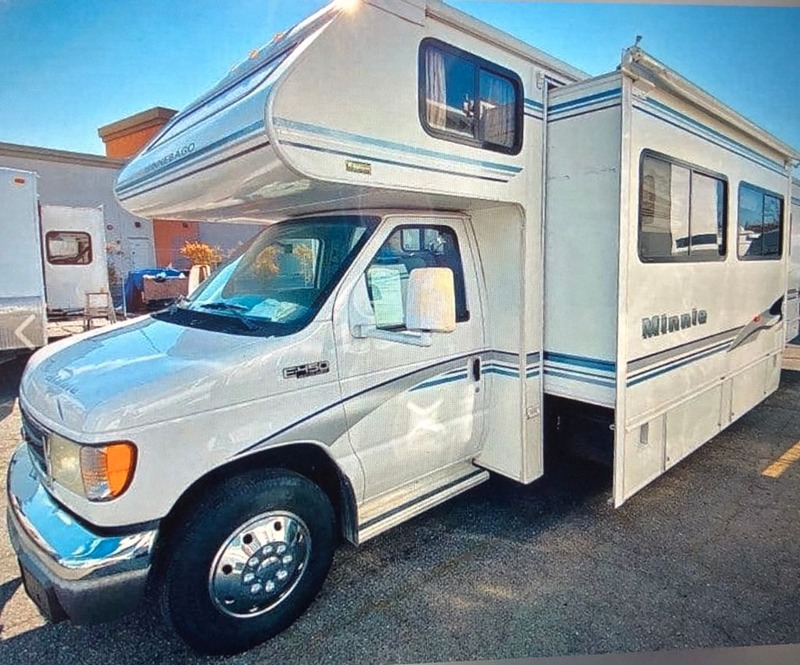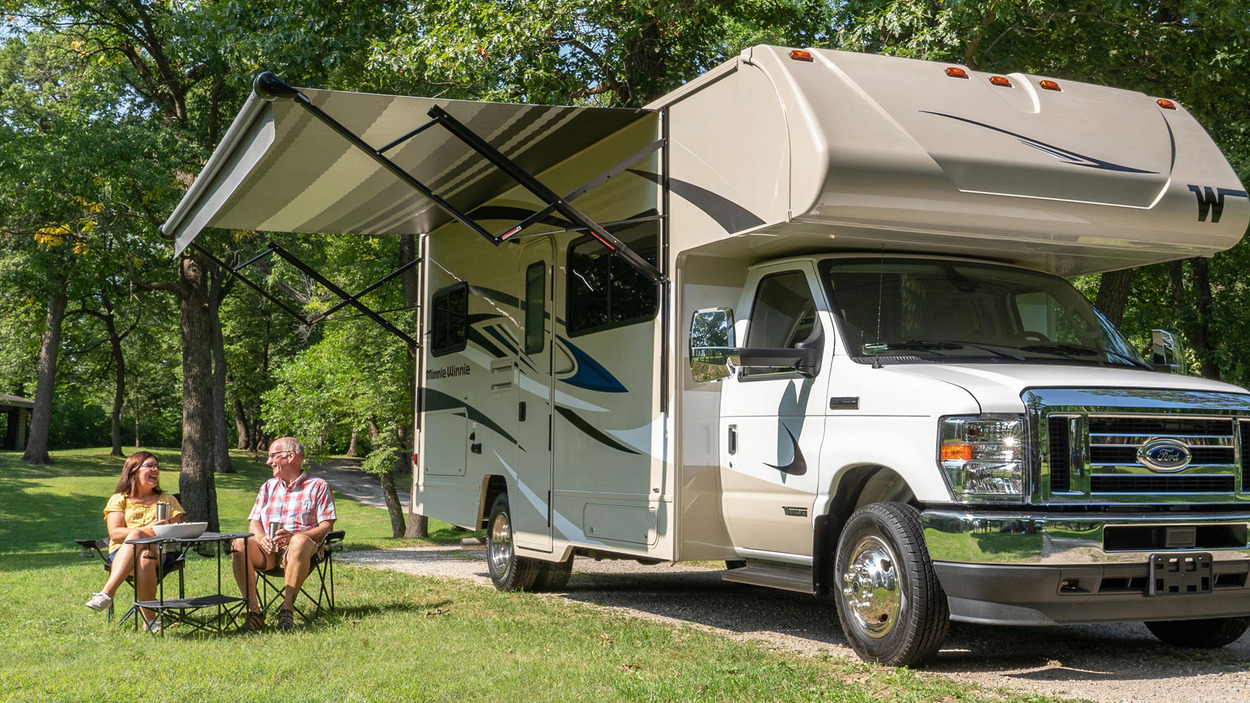The 1993 Minnie Winnie Mpg is a classic RV that is appreciated for its balance of comfort, performance and practicality. One of the most important aspects for those interested in vintage RVs is fuel efficiency, especially on long road trips and cross-country adventures. In this article, we’ll tell you everything you need to know about the 1993 Minnie Winnie’s miles per gallon (MPG), how you can increase its fuel efficiency, and why it’s still an attractive option for RV enthusiasts. In this article, we’ll read about the 1993 Minnie Winnie’s miles per gallon (MPG).
Diagram of 1993 Minnie Winnie Mpg

Winnebago’s Minnie-Winnie line has been a well-known choice among RV enthusiasts for decades, largely due to its unwavering quality, open-plan design and practicality. The 1993 model is considered one of the most classic models, reflecting early ’90s style as well as Winnebago’s commitment to strength and quality craftsmanship.
Equipped with a sturdy construction and a range of features focused on comfort and practicality, the 1993 Minnie Winnie is ideal for casual travelers and RV enthusiasts alike. It comes in a variety of lengths and formats, making it versatile for different needs. While it offers ample space, comfort and amenities, the question often arises: what about fuel economy?
Expected Fuel Economy and 1993 Minnie Winnie Mpg
The 1993 Minnie Winnie is powered by a V8 engine, most often from a Portage or Chevrolet, both of which are known for their unwavering quality but are not particularly fuel efficient by today’s standards. On average, a 1993 Minnie Winnie will deliver between 8 and 10 miles per gallon (MPG), depending on factors such as driving habits, surface area, and engine weight. For an RV of this size, this MPG is normal, as RVs typically consume more fuel due to their weight and aerodynamics.
Factors that affect the 1993 Minnie Winnie Mpg
Engine condition: Older engines may not run as well as newer ones, especially if they have not been well maintained.
Driving speed: Higher speeds can cause a reduction in MPG because the engine works harder and wind resistance increases.
Terrain: Driving on difficult or uneven terrain can completely reduce fuel economy.
Weather conditions: Windy or breezy conditions can also affect fuel efficiency.
Weight: Carrying gear or accessories around the RV uncontrollably increases weight, which lowers fuel economy.
Improve fuel efficiency: Tips to get the most out of your Minnie Winnie’s fuel economy
Getting better fuel economy with an older RV like the Minnie Winnie can be challenging, but there are a few things you can do that can help. Here are some practical ways to maximize fuel efficiency:
a) Standard Maintenance
Engine Tuning: Keeping your engine well tuned will improve overall performance and efficiency.
Air Duct Replacement – A clean air duct improves airflow to the engine, making it run more efficiently.
Oil Change: Using proper oil control and changing it frequently will reduce engine contact, which can reduce fuel consumption.
Tire Weight: Keeping tire pressure at the manufacturer’s recommended level will reduce rolling resistance, allowing the engine to move the RV more easily.
b) Change Driving Habits
Avoid Rapid Acceleration and Braking: Slow acceleration and braking improves fuel efficiency.
Maintain a Constant Speed: A constant speed, especially on highways, keeps the engine at an ideal power level.
Use Trip Control: On long, flat stretches, trip control can help keep fuel consumption consistent.
c) Reduce weight
Minimize equipment and accessories: Reducing the amount of load the Minnie Winnie carries can help reduce fuel consumption.
Empty tanks when not in use: Water and waste tanks have a significant weight, so empty them whenever possible to save fuel.
d) Consider aerodynamic improvements
Use a wind deflector – Wind deflectors can reduce wind resistance, especially at higher speeds.
Remove roof load when not needed: Reducing the amount of equipment on the roof reduces wind resistance, allowing the engine to run more efficiently.
Comparison with other motorhomes: Comparison of the 1993 Minnie Winnie Mpg
While the 1993 Minnie Winnie isn’t the most fuel-efficient RV, it’s comparable to other RVs in its class and era. In general, most Class C RVs from the early ’90s, like the Minnie Winnie, offer an MPG rating of 7 to 10 miles per gallon. This is largely due to the weight and construction of these RVs, as well as the V8 engines that powered most RVs at the time.
Compared to today’s RVs, which typically get between 10 and 12 MPG, largely due to advances in fuel injection systems, optimal design, and hybrid innovations, the Minnie Winnie’s MPG may seem low. Still, it remains a solid and generally fuel-efficient option within its age class.
Costs Associated with Fuel Economy of a 1993 Minnie Winnie
Fuel economy is an important calculation for any RV owner. With a normal MPG of around 8-10 miles per gallon, fuel costs can add up quickly. Here’s a descriptive calculation to help you get an idea of the fuel costs associated with a 1993 Minnie Winnie:
Assume: Gas costs $4 per gallon.
Average MPG: 9 miles per gallon.
Distance: 1,000 miles.
Calculation:
Fuel required = 1,000 miles ÷ 9 MPG ≈ 111 gallons
Total fuel received = 111 gallons × $4/gallon = $444
On a long-distance trip, fuel costs can easily reach hundreds or even thousands of dollars depending on the trip. These costs should be factored into any trip’s budget.
Points of interest when owning a 1993 Minnie Winnie Beyond: Fuel efficiency
While MPG may not be the Minnie Winnie’s biggest selling point, there are other reasons to consider this classic RV:
a) Unwavering quality and durability
Winnebago built its reputation on producing reliable RVs, and the 1993 Minnie Winnie is no exception. Owners report that these RVs can provide long, reliable service with normal maintenance.
b) Reasonable price
Because of its vintage status, the 1993 Minnie Winnie is often available at a lower price than more modern RVs, making it a sensible starting point for first-time RV owners or those on a budget.
c) Classic Aesthetics
The early ’90s design of the Minnie Winnie offers a nostalgic style that will appeal to fans of vintage RVs. The wood paneling, open format and classic Winnebago branding add to its charm.
d) Spacious Interior Design
Despite its compact size for a recreational vehicle, the Minnie Winnie offers a thoughtful interior design that maximizes living space, making it perfect for families and long trips.
1993 Minnie Winnie MPG Cons
While the Minnie Winnie has many attractive points, fuel economy remains one of its main drawbacks. Here are a few reasons why this might be a problem for some homeowners:
Higher fuel costs: Long trips can get expensive due to the amount of fuel used.
Environmental impact: RVs with lower fuel consumption emit more CO2, making them less environmentally friendly.
Limited trips between fill-ups: Due to the lower fuel consumption, the Minnie Winnie requires more fuel stops, which may not be advisable on long trips.
Is the 1993 Minnie Winnie Right for You?
Deciding whether the 1993 Minnie Winnie is the right choice depends on your needs. If you’re looking for a reliable, affordable RV with classic looks, the Minnie Winnie is hard to beat. If fuel economy is a major concern, you should definitely consider more modern RV models or alternative vehicles with significantly better fuel economy.
Final Thoughts on the Minnie Winnie 1993 MPG
The 1993 Minnie Winnie MPG offers of 8 to 10 miles per gallon, which is average for RVs of its class and era. While it may not be the most fuel-efficient option on the market, the Minnie Winnie makes up for it with its unwavering quality, comfort, and nostalgic appeal. For those willing to contribute through regular maintenance and careful driving habits, this classic RV can provide an enjoyable and vital travel experience.
With proper care and a few modifications, owners of a 1993 Minnie Winnie can maximize their fuel efficiency and enjoy the many tasks that await them on the road. Whether you’re an RV enthusiast or a newcomer to the world of RVing, the 1993 Minnie Winnie remains a popular model that continues to stand the test of time.
Specs:
1.Model Overview: The 1993 Minnie Winnie is a vintage Winnebago RV known for its balance of comfort, performance and affordability with a classic early ’90s design.
2.Fuel Efficiency: Averaging 8-10 MPG, it’s on par with other early ’90s RVs due to its size, weight and V8 engine.
3. Factors Affecting MPG:
Engine Condition: Older engines can lose efficiency without regular maintenance.
Driving Habits: Steady speeds, cruise control and slow acceleration can help improve MPG.
Loading and Terrain: Extra weight, steep grades and difficult conditions can reduce fuel efficiency.
4. Improved Fuel Efficiency:
Regular Maintenance: Engine tune-up, air filter change and tire pressure check.
Weight Reduction: Empty water and holding tanks when possible.
Aerodynamic Adjustments: Elimination of roof loading and use of wind deflectors.
5. Fuel Cost: Based on an average fuel economy of 9 MPG and a gas price of $4 per gallon, a 1,000-mile trip would cost approximately $444 in fuel.
6. Benefits Beyond Fuel Economy: The 1993 Minnie Winnie is praised for its reliability, classic aesthetics, affordability, and spacious interior.
Summary
The article provides a complete overview of the 1993 Minnie Winnie MPG, emphasizing its MPG and the factors that affect its fuel economy. The RV’s average fuel economy is between 8 and 10 MPG, which is typical for RVs of its era. Although it uses less fuel than newer models, it offers unique benefits such as reliability, classic charm, and affordability. Through regular maintenance, careful driving, and modifications, owners can optimize the Minnie Winnie’s fuel economy, making it a valuable option for those who appreciate vintage RVs and value reliability and profitability over low fuel economy.
Frequently Asked Questions
Q1: What is the average MPG of a 1993 Minnie Winnie?
A: The 1993 Minnie Winnie averages 8 to 10 miles per gallon, depending on driving conditions, loading and maintenance.
Q2: How can I improve the fuel efficiency of my 1993 Minnie Winnie?
A: To improve MPG, perform regular maintenance (engine tune-ups, tire checks), reduce load, maintain consistent speeds and consider aerodynamic adjustments such as wind deflectors.
Q3: What types of engines are common in the 1993 Minnie Winnie?
A: The 1993 Minnie Winnie is usually equipped with a V8 engine, often from Ford or Chevrolet.
Q4: What are the fuel costs for a long trip in the 1993 Minnie Winnie?
A: At an average of 9 MPG and $4 per gallon for gas, a 1,000-mile trip would cost approximately $444 in fuel.
Q5: Why is the 1993 Minnie Winnie still popular despite its lower fuel efficiency?
A: The 1993 Minnie Winnie is loved for its reliability, classic design, affordability, and practical interior layout, making it ideal for those who enjoy the charm of vintage RVs.
Q6: What are the fuel economy disadvantages of the 1993 Minnie Winnie?
A: The main disadvantages are higher fuel costs, greater environmental impact, and the need for more frequent fuel stops due to the lower fuel economy.










